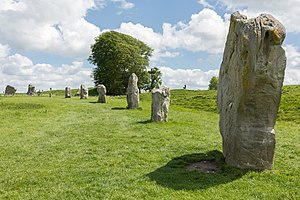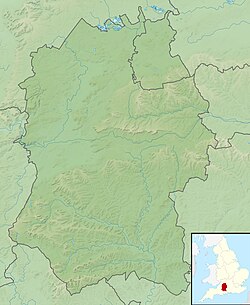Avebury
| Stonehenge, Avebury and Associated Sites | |
|---|---|
| Name as inscribed on the World Heritage List | |
 
|
|
| Location |
|
| Type | Cultural |
| Criteria | i, ii, iii |
| Reference | 373 |
| UNESCO region | Europe and North America |
| Coordinates | 51°25′43″N 1°51′15″W / 51.42861°N 1.85417°WCoordinates: 51°25′43″N 1°51′15″W / 51.42861°N 1.85417°W |
| Inscription history | |
| Inscription | 1986 (10th Session) |
Avebury (/ˈeɪvbri/) is a Neolithic henge monument containing three stone circles, around the village of Avebury in Wiltshire, in southwest England. One of the best known prehistoric sites in Britain, it contains the largest stone circle in Europe. It is both a tourist attraction and a place of religious importance to contemporary pagans.
Constructed over several hundred years in the 3rd millennium BC, during the Neolithic, or New Stone Age, the monument comprises a large henge (a bank and a ditch) with a large outer stone circle and two separate smaller stone circles situated inside the centre of the monument. Its original purpose is unknown, although archaeologists believe that it was most likely used for some form of ritual or ceremony. The Avebury monument is a part of a larger prehistoric landscape containing several older monuments nearby, including West Kennet Long Barrow and Silbury Hill.
By the Iron Age, the site had been effectively abandoned, with some evidence of human activity on the site during the Roman occupation. During the Early Middle Ages, a village first began to be built around the monument, eventually extending into it. In the Late Medieval and Early Modern periods, local people destroyed many of the standing stones around the henge, both for religious and practical reasons. The antiquarians John Aubrey and William Stukeley, however, took an interest in Avebury during the 17th century, and recorded much of the site before its destruction. Archaeological investigation followed in the 20th century, led primarily by Alexander Keiller, who oversaw a project which reconstructed much of the monument.
...
Wikipedia

